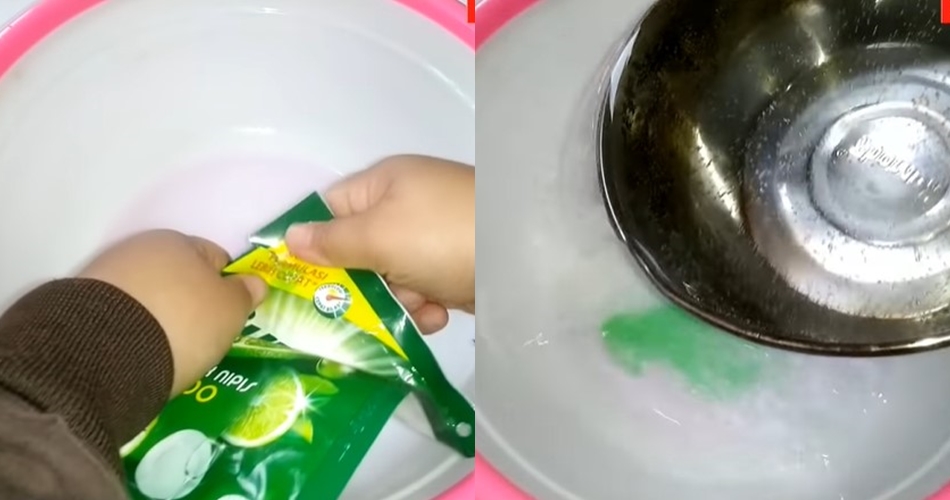YouTube/BISNIS IBU RUMAH TANGGA
Brilio.net - After being used many times, a mop can become dingy and dirty if it is not cleaned properly. Not to mention, if a dirty mop is left for a long time, the stains will definitely become very stubborn. That's why many people try various ways to clean it so that the mop can be clean again.
One simple way to clean a dirty mop is to soak it in a citric acid solution. This ingredient is known to have high acidity to help remove stubborn stains. However, not everyone has a stock of citrus at home. Not to mention, this material is also sometimes difficult to find on the market.
So, for those of you who don't have a lemon, don't worry just yet because you can try the method for washing a mop shared by netizens on the HOUSEWIFE BUSINESS YouTube account. After investigating, this method only requires the addition of one kitchen ingredient to return the dirty mop to clean again.
How to wash a dirty mop so it's clean again quickly.
First, prepare a basin or any container to soak the mop. Put enough liquid detergent into the container. Then, also add enough dish soap. Yup, dish soap is the main kitchen ingredient for practicing how to wash this mop. Then, dissolve the two ingredients in hot water.

photo: YouTube/HOUSEWIFE BUSINESS
It doesn't stop there, the cleaning solution mixture must also be added with laundry bleach to make the cleaning process more effective. Just use 3 to 4 bottles of bleach. Next, just soak the mop in the cleaning mixture.
"The cap (of the bleach liquid bottle) is really small, so we don't add much," added the owner of the YouTube account HOUSEWIFE BUSINESS, quoted by BrilioFood on Wednesday (6/3).

photo: YouTube/HOUSEWIFE BUSINESS
Soak the mop for approximately 1 hour. Later, the water soaked in the mop, which was originally white, will turn brown because it has succeeded in eradicating the stain. So, to make the mop whiter, continue brushing the mop for a few moments. After that, rinse, wring and dry the mop until dry before using it again for mopping.

photo: YouTube/HOUSEWIFE BUSINESS
How, it's really easy to wash this mop, right? Taking a peek at the HOUSEWIFE BUSINESS YouTube upload, there are several netizens leaving enthusiastic comments about this method, you know. Apart from that, this video has also received more than 17 thousand viewers.
How to choose safe dishwashing soap for sensitive skin.
Choosing dishwashing soap that is safe for sensitive skin is very important to prevent irritation or allergic reactions. Here are several ways to choose dishwashing soap that is suitable for sensitive skin.
1. Choose a hypoallergenic formula.
Choose dish soap that is specifically designed for sensitive skin or labeled "hypoallergenic." These formulas are usually free of fragrances, dyes, and other harsh chemicals that can cause irritation.
2. Pay attention to labels.
Read labels carefully and avoid dish soaps that contain ingredients such as artificial perfumes, synthetic dyes, sulfates, phosphates, or other chemicals that may irritate the skin.
3. Choose products free from harsh chemicals.
Avoid dish soap that contains harsh chemicals such as triclosan, formaldehyde, or ammonia. These ingredients may cause irritation to sensitive skin.
4. Choose a gentle formula.
Choose a dish soap that is designed for sensitive skin or claims to be "gentle" or "skin-friendly." These formulas tend to be gentler on the skin and less likely to cause irritation.
5. Try fragrance-free ones.
Artificial fragrances often trigger irritation on sensitive skin. Choose dish soap that is free from added fragrances or choose one that has a natural scent such as essential oils.
6. Test it first.
Before using it regularly, test the new dish soap on a small area of your skin to ensure that no allergic reaction or irritation occurs.
7. Consult a dermatologist.
If you have very sensitive skin or a history of certain allergies, consult a dermatologist or health professional for product recommendations that are suitable for you.
(brl/lut)